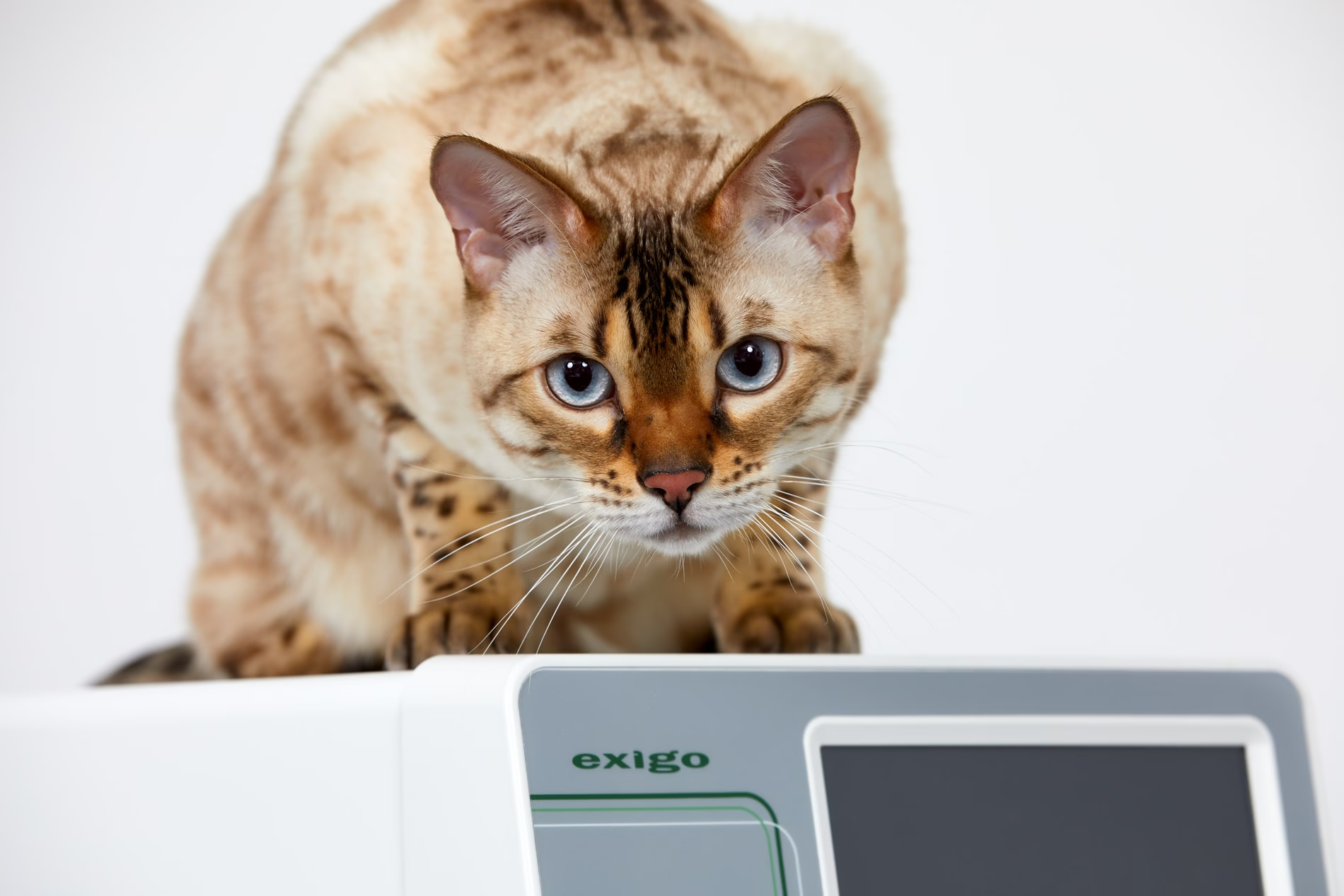Optimizing platelet count in cats
Blood sampling from a patient who is scared can be very hard. To add a communication barrier to this is of course not ideal, but this is what veterinarians face every day. Besides the well-being of, and the difficulty to sample from the patient, the stress can also result in biological effects on blood cell populations. Such a stress-related change can, for example, be platelet aggregation.
This article summarizes tips and pointers on how to improve the platelet count in animals using automated veterinary hematology systems.
Platelets, not your typical cells
A common issue when analyzing platelets is the merging of the PLT peak with the RBC peak,
obscuring the valley in between these peaks. This issue can have several reasons, such as variability
in PLT size, activation and aggregation of platelets, and the presence of RBC fragments or
microcytic RBCs.
Platelet size and variability differs between animal species, for instance, cats have larger PLTs with
a greater variability in size (MPV 11–18.1 fL) as compared to dogs, pigs, and humans (MPV 7.6–8.3 fL)
(1). For cats, it is therefore a greater risk that the natural variation in size in between PLTs and RBCs
overlaps.
Aggregated platelets
Aggregation of PLTs is a major source of errors in the PLT count. The aggregation is a result of
the reactive nature of PLTs, which can be stimulated to aggregate by a variety of factors such
as adenosine diphosphate (ADP) and serotonin (excreted from the PLTs themselves), adrenalin,
vasopressin, collagen, and thrombin (1, 2). One theory for why PLTs from some animals, such as cats,
are more prone to aggregation than others is their larger size (therefore containing and releasing
more ADP and serotonin) and their sensitivity to stress-related substances such as adrenalin and
vasopressin (1).
If there is a high degree of PLT aggregation in the sample, this will lead to less single PLTs and
therefor a false low count, also called pseudo-thrombocytopenia.
Pseudo-thrombocytopenia can also be EDTA-induced. This is an in vitro phenomenon caused by
anti-PLT antibodies from the patient binding to EDTA-activated epitopes on the PLT (3).
